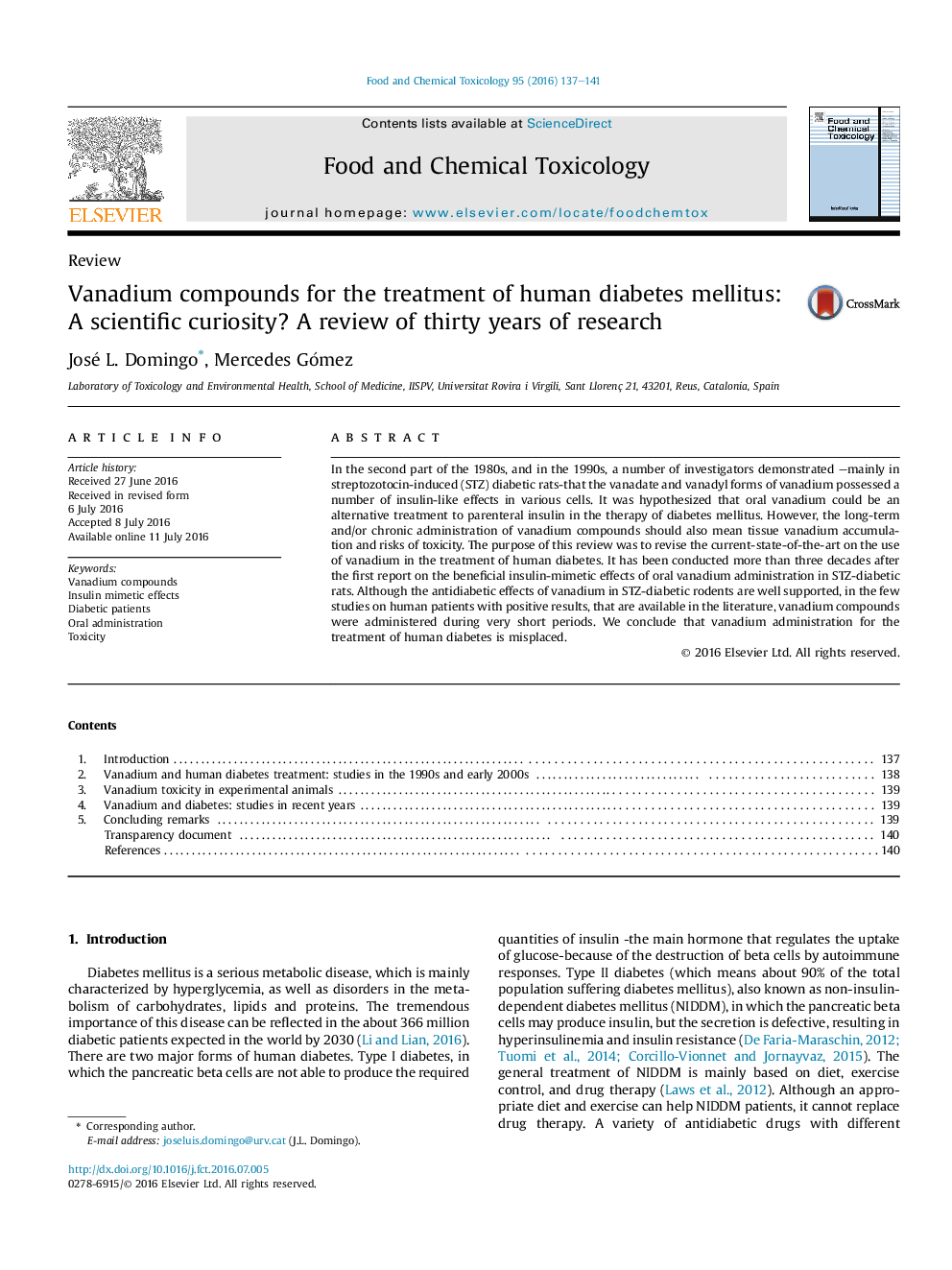| Article ID | Journal | Published Year | Pages | File Type |
|---|---|---|---|---|
| 5849285 | Food and Chemical Toxicology | 2016 | 5 Pages |
â¢The current-state-of-the-art on the use of vanadium in the treatment of human diabetes is here reviewed.â¢Studies on human patients, with positive results, administered vanadium compounds during very short periods.â¢Vanadium for diabetes treatment would require a continued administration, which would mean vanadium accumulation and toxicity.â¢The use vanadium compounds for the treatment of diabetes mellitus is rather a scientific curiosity.
In the second part of the 1980s, and in the 1990s, a number of investigators demonstrated -mainly in streptozotocin-induced (STZ) diabetic rats-that the vanadate and vanadyl forms of vanadium possessed a number of insulin-like effects in various cells. It was hypothesized that oral vanadium could be an alternative treatment to parenteral insulin in the therapy of diabetes mellitus. However, the long-term and/or chronic administration of vanadium compounds should also mean tissue vanadium accumulation and risks of toxicity. The purpose of this review was to revise the current-state-of-the-art on the use of vanadium in the treatment of human diabetes. It has been conducted more than three decades after the first report on the beneficial insulin-mimetic effects of oral vanadium administration in STZ-diabetic rats. Although the antidiabetic effects of vanadium in STZ-diabetic rodents are well supported, in the few studies on human patients with positive results, that are available in the literature, vanadium compounds were administered during very short periods. We conclude that vanadium administration for the treatment of human diabetes is misplaced.
